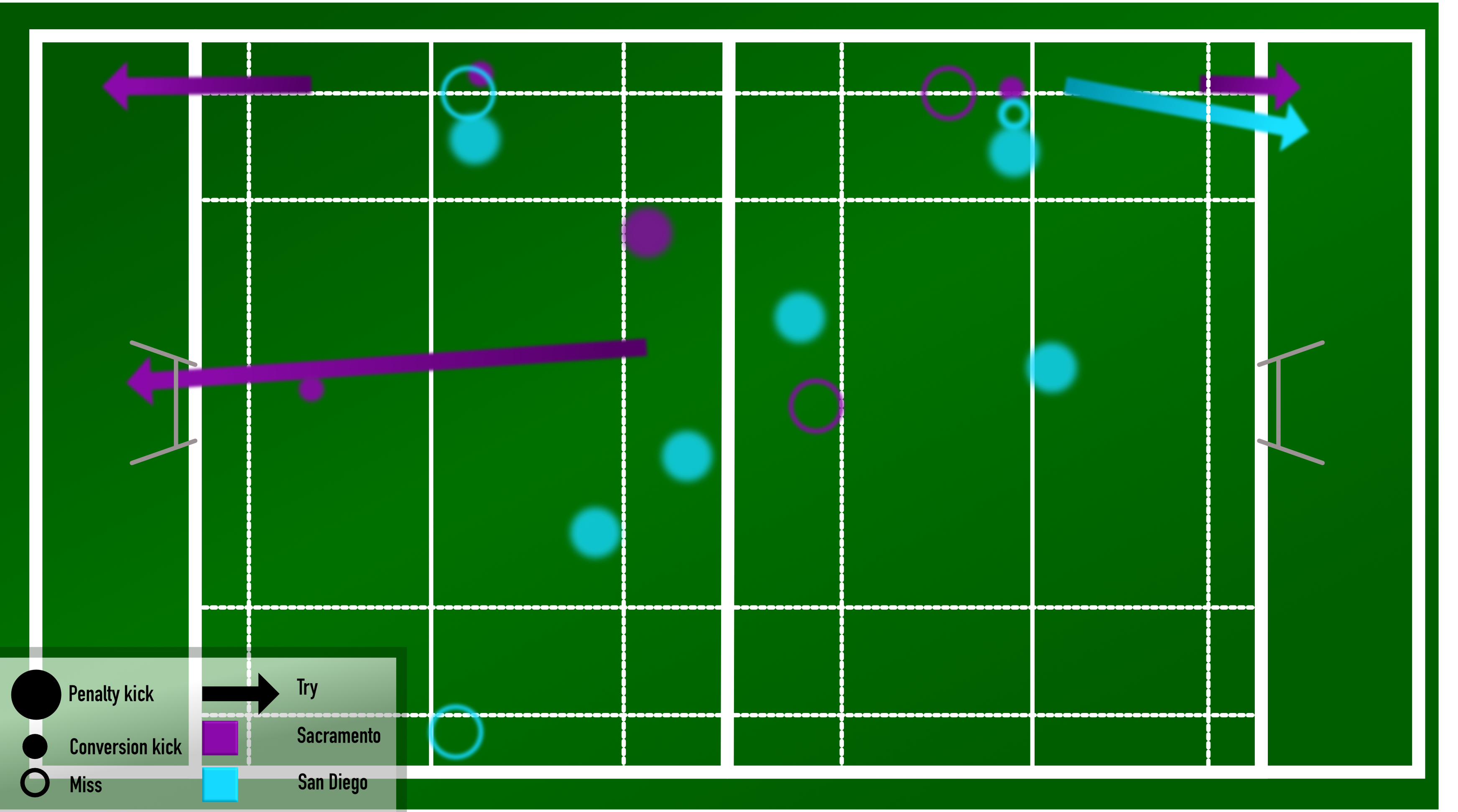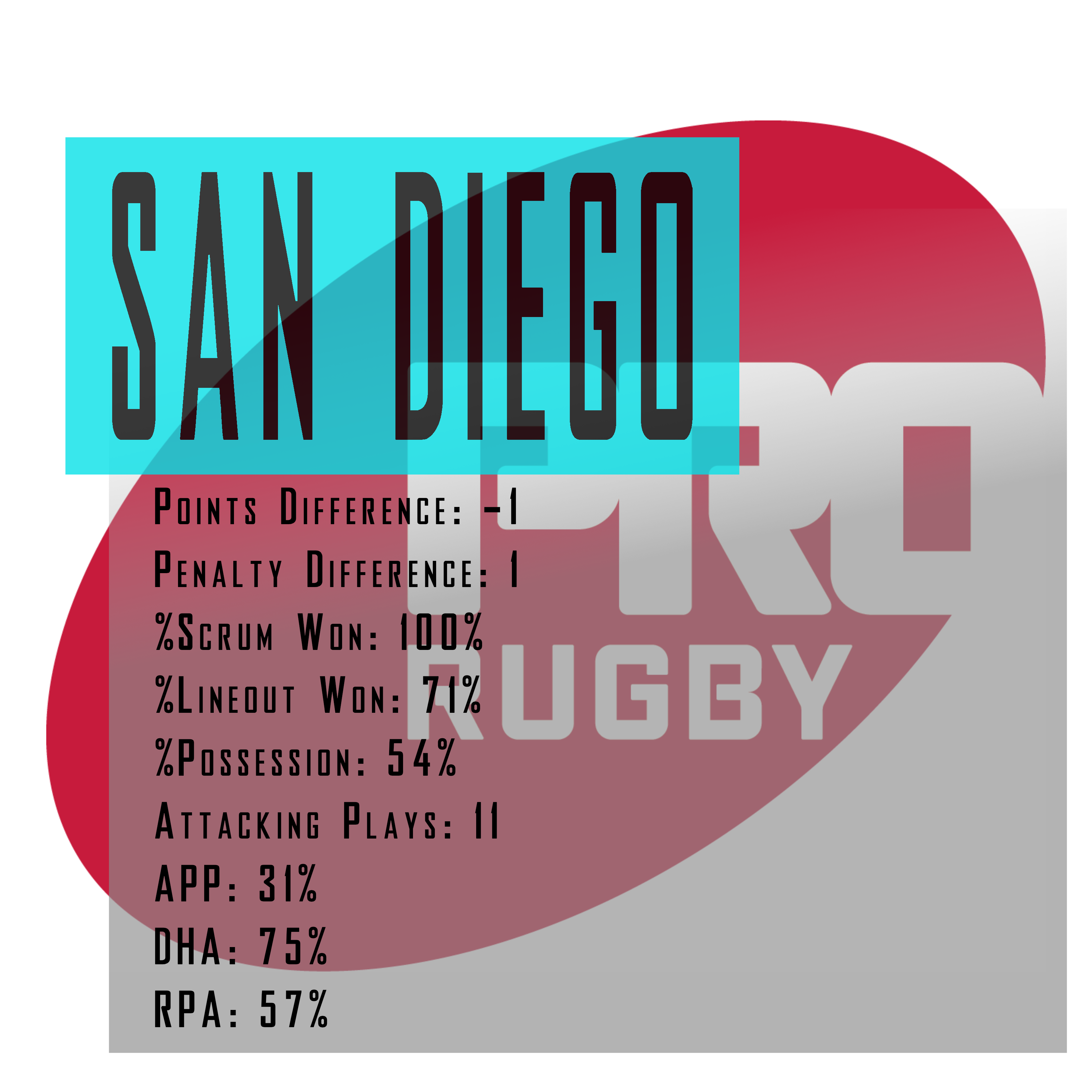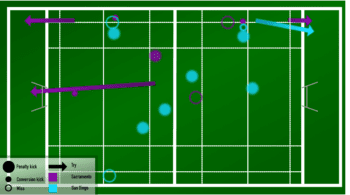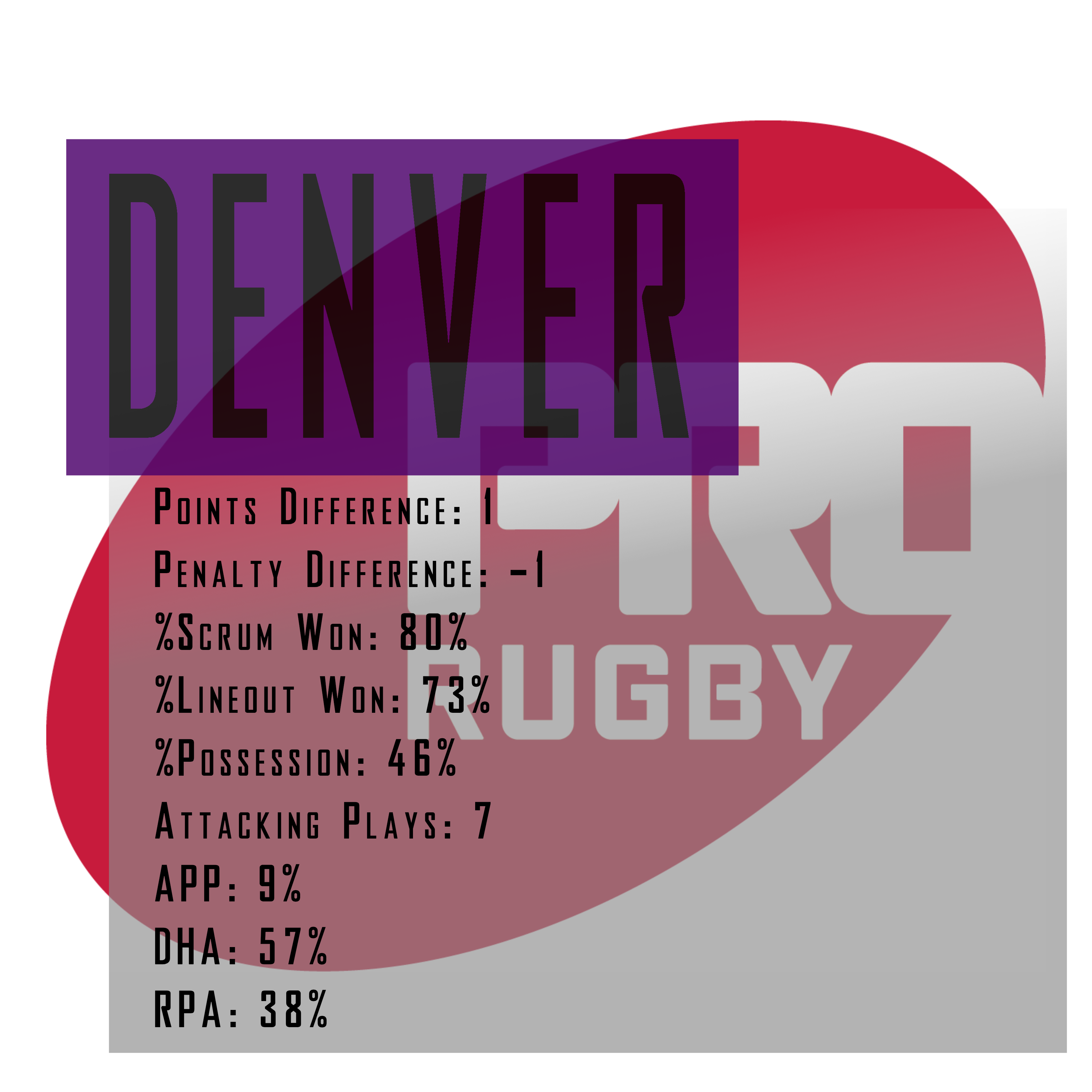
GREENWICH, CT – With a bye for 3 of the 5 PRO Rugby teams this weekend, all eyes were on the heavyweight clash between newly-named Denver Stampede and San Diego Breakers. And the two top team did not fail to entertain in a close back-and-forth match.
Take a quick look at this Handy-Dandy [tm] Glossary before continuing:
- Average Penalty Points(APP) – Number of times points are scored off of penalties in the attacking half of the field divided by total penalties awarded in attacking side
- Defensive Hold Average(DHA) – Number of times a team repels its opponent within it’s own 22 meter divided by the number of times opponent enters within 22 meter line.
- Red Zone Point Average(RPA) – Number of times a team gets points when it goes inside the 22 meter line divided by the number of time that team is inside the 22 meter line.
- Attacking Plays – Offloads plus line breaks plus runs >20 meters Penalty Difference – Penalties awarded divided by penalties conceded
- Turnovers – Times the ball changes possession not including penalties. Ex. counter ruck, interception, stolen lineout, etc.

Let’s break down the numbers. San Diego and Denver got points on the board using different strategies. It’s clear from looking at the scoring chart below that the boot of Kurt Morath was deadly for San Diego. The league leading point scorer converted 75% of his kicks for goal and half of them were from at least 40 meters out. THAT is impressive. The Breakers had four more attacking plays than the Stampede, which reflects the difference in playing styles.
Using USA Eagles Taku Ngwenya and Mike Teo out wide opened up opportunities for Breakers to break through the line. The combination of using the boot from Morath and the pace from Ngwenya and Teo really worked to San Diego’s advantage. Denver, on the other hand, relied more on its forward pack to drive up the field by using USA U20 Captain Hanco Germishuys to trample any player in his way before dishing it to its backs for tries. On defense, San Diego played a strong game as well. When the Stampede was charging toward the line, San Diego had a 75% DHA. Statistically there is not really anything that San Diego did wrong. Unfortunately in sports, it’s the team that scores the most points that wins. Despite scoring on more occasions than Denver, San Diego’s points came primarily from kicks at goal, rather than tries. While San Diego was more efficient in their play than Denver, they settled for too little when it came to scoring opportunities.

For Denver, it was go big or go home. When Denver’s Will Magie did kick for goal, he was only 1/3, so the kicking game did not factor much into the victory. The Stamppede only had a RPA of 38%, which was significantly lower than the Breaker’s 57%. Despite the lack of efficiency in scoring, in the second half Denver was able to step up when they had to and scored two tries; the second one in the 73rd minute, off a kick downfield that was recovered by Martin Knoetze on a lucky bounce. That gave the visitors the lead with little left on the clock.
Denver had a respectable 57% DHA, though, which makes sense since San Diego often settled for 3 points, instead of continuing down field to get inside 22 meter for a chance to score.
Possession in the game was split pretty evenly, with the Stampede holding onto the ball for 46% of the match. Denver was awarded eleven penalties in its attacking half and San Diego had thirteen, which shows that Denver had it’s chances to kick for points but instead gambled to go for tries. They used their forwards to slowly but steadily drive to the try zone, before trying their luck outside with the backs. This strategy didn’t rack up impressive stats but was just enough for Denver to barely get by San Diego and hold onto the number one spot in the league.

Next week San Diego will hit the road and take on Ohio. Things to watch are how last time out Ohio had a penalty difference of -8 and 0 attacking plays. If the Aviators want to fly high, they’ll need to limit the damage from Kurt Morath’s boot and cut down on the number of penalties. Ohio will also have to find a way to get through San Diego’s stellar defense, which has had an average DHA of 73%, the last two games.
The Ohioans don’t use offloads or fancy play to beat teams but if it’s able to perfect the basics and get the ball to the outside. Wing Spike Davis might be able to puncture the Breaker’s defense.
Prediction: I’m putting my money on San Diego because from looking at the numbers, the way its defense is playing and the efficiency of it’s attack (64% RPA the last two games) is too much to ignore.
Again, please feel free to comment below, look for and “Like” our Facebook Rugby Wrap Up Page and follow us on Twitter@: Luke Bienstock, RugbyWrapUp, Junoir Blaber, @MeetTheMatts, Ronan Nelson,Crawford Miller, James Harrington and Declan Yeats.

